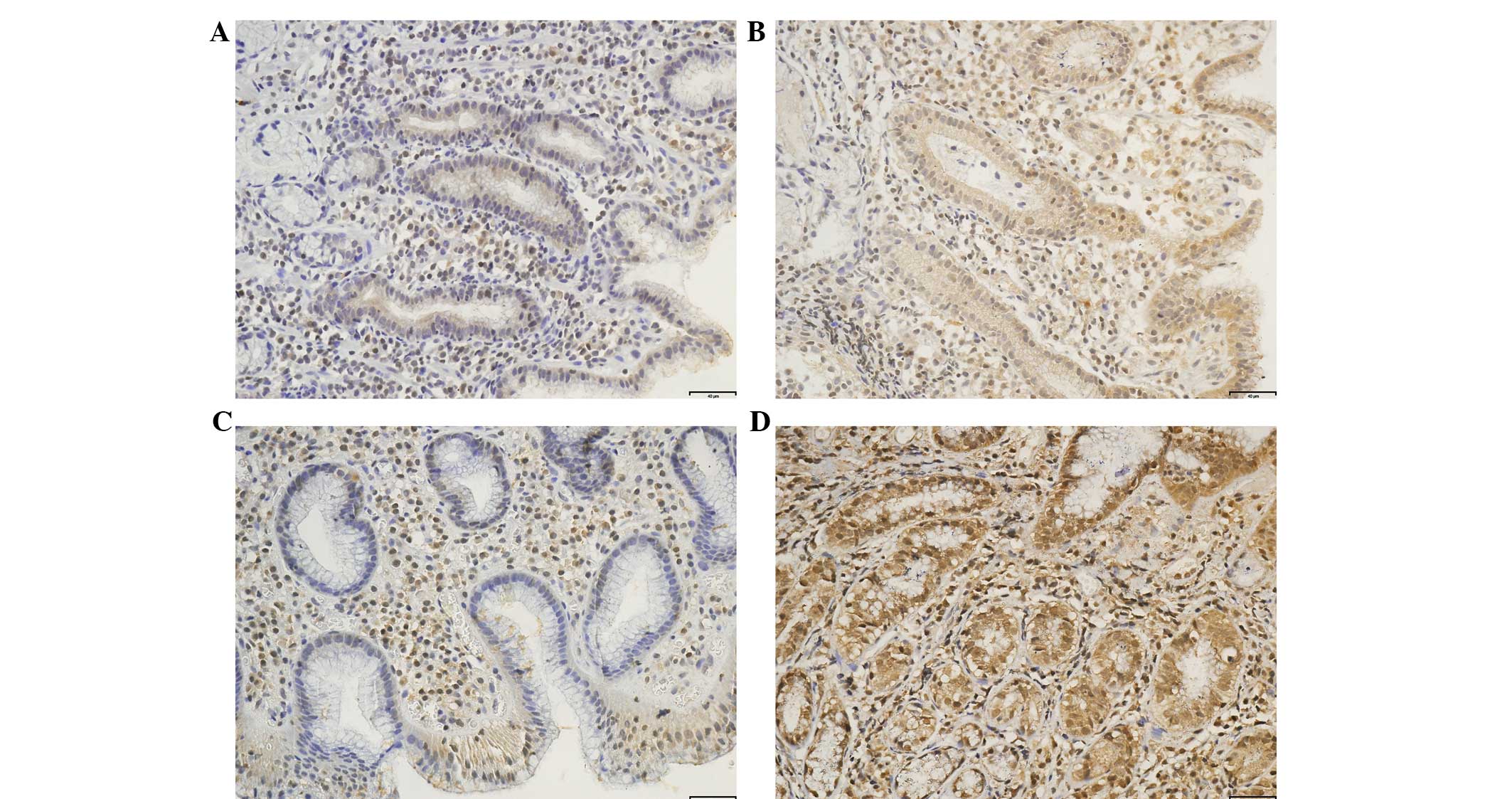Seasonal changes in gastric mucosal factors associated with peptic ulcer bleeding
- Authors:
- Published online on: November 19, 2014 https://doi.org/10.3892/etm.2014.2080
- Pages: 125-130
Metrics: Total
Views: 0 (Spandidos Publications: | PMC Statistics: )
Total PDF Downloads: 0 (Spandidos Publications: | PMC Statistics: )
Abstract
A close association has been established between climate and peptic ulcer bleeding (PUB). The incidence of PUB in cold climates is significantly higher than that in hot climates. In this study, gastric mucosal damage and its barrier function (through associated barrier factors) in extreme climate conditions were examined to investigate the pathogenesis of PUB in extreme cold climates. Gastric juice and biopsy specimens were collected from 176 patients with peptic ulcer. Conventional hematoxylin and eosin staining was used to exclude malignant ulcers. Helicobacter pylori infections were detected by modified Giemsa staining. pH values of the gastric juice samples were obtained on‑site by precise pH dipstick readings. The protein expression levels of heat shock protein (HSP) 70, occludin, nitric oxide synthase (NOS), epidermal growth factor (EGF) and EGF receptor (EGFR) in the gastric mucosa were detected by immunohistochemistry. No significant differences were identified between the high and low bleeding risk groups in the rates of H. pylori infection and the pH values of the gastric juices in the extreme hot or cold climates. Furthermore, no statistically significant differences were identified in the protein expression levels of occludin, NOS, EGF and EGFR between the high and low bleeding risk groups. In the extreme cold climate, the expression of HSP70 and the mucus thickness of the gastric antrum in the high bleeding risk group were significantly lower than those in the low bleeding risk group. The protein expression levels of occludin, HSP70, NOS and EGFR in the extreme cold climate were significantly lower than those in the extreme hot climate, whereas the gastric acid secretion was significantly higher in the extreme cold climate than that in the extreme hot climate. In conclusion, low expression of HSP70 in the gastric mucosa and reduced gastric mucus thickness may play key roles in the mechanism of PUB in extreme cold climates. The significant decrease in barrier factors and increase in damage in extreme cold climates may be associated with the seasonal pattern of peptic ulcers.












